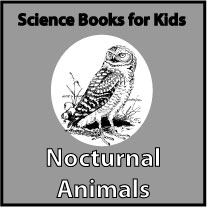In honor of the longest night (December 21), we are introducing a new book for middle graders Dark Matters: Nature’s Reaction to Light Pollution by Joan Marie Galat. It is the perfect time to ponder the importance of darkness.
Dark Matters sheds light on a relatively new science,”scotobiology,” which is the study of how darkness and light effect the health and behavior of living organisms. Scotobiology was officially established in 2003, although scientists have known of the impacts of artificial light for decades.
Set up a bit differently than most nonfiction, each chapter in Dark Matters starts with Joan’s reminisces about her childhood experiences with night and lights. The personal stories draw in young readers and help give perspective to the more technical informational sections that follow. They also remind the reader that our environment is changing from one generation to the next. Young children may never have seen the Milky Way because light pollution is so prevalent.
After establishing what light pollution is, Galat reveals how excessive artificial lights at night can harm not only nocturnal animals such as bats and fireflies, but also day-active animals, such as birds. In some places birds end up singing all night because they are confused by excessive lights. In other places migrating birds crash into tall building at night, plunging to their deaths in vast numbers. Throughout the book she reveals many examples of how our environment is being harmed by excessive artificial light.
The book trailer gives you a good idea of the topics it covers:
Dark Matters explores an important topic that is relatively new and hasn’t received much attention. Check out a copy today.
Related Activity:Â Investigate the Night
In our area in the summer the Desert Botanical Garden holds flashlight tours of the garden at night. It is an enlightening experience because the garden becomes a very different place in the dark. The humidity goes up and the wind goes down. The temperatures start to drop. Suddenly your senses of smell, hearing, and touch come alive and your night vision kicks in. Night-blooming plants flower and nocturnal animals scamper. It’s amazing.
Look for similar nighttime excursions to participate in near your home. As well as flashlight tours, look for outdoor astronomy demonstrations and night hikes. Don’t forget to write down your thoughts and observations after you are done.
Links for more information:
- Check out the links and activity suggestions at Joan Galat’s Website
- Find out about the “dark side” of LED lights — the blue light they make depresses melatonin, an important hormone — at Science Friday
- Revisit previous posts about nocturnal animals and/or animals effected by light pollution here at Growing with Science:
- Bat Science Activities
- Fireflies or lightning bugs
- Sea Turtles
- Nocturnal animals and light pollution (with activities)
And be sure to visit our growing list of children’s books about nocturnal animals at Science Books for Kids.
Age Range: 10 – 18 years
Publisher: Red Deer Press; 1 edition (July 30, 2017)
ISBN-10: 0889955158
ISBN-13: 978-0889955158
Disclosure: This book was provided by the author/publisher for review purposes. Also, I am an affiliate with Amazon so I can provide you with cover images and links to more information about books and products. As you probably are aware, if you click through the highlighted title link and purchase a product, I will receive a very small commission, at no extra cost to you. Any proceeds help defray the costs of hosting and maintaining this website.
Although it’s a day early, we are also participating in STEM Friday.
Come visit the STEM Friday blog each week to find more great Science, Technology, Engineering and Math books.




Leave a Reply